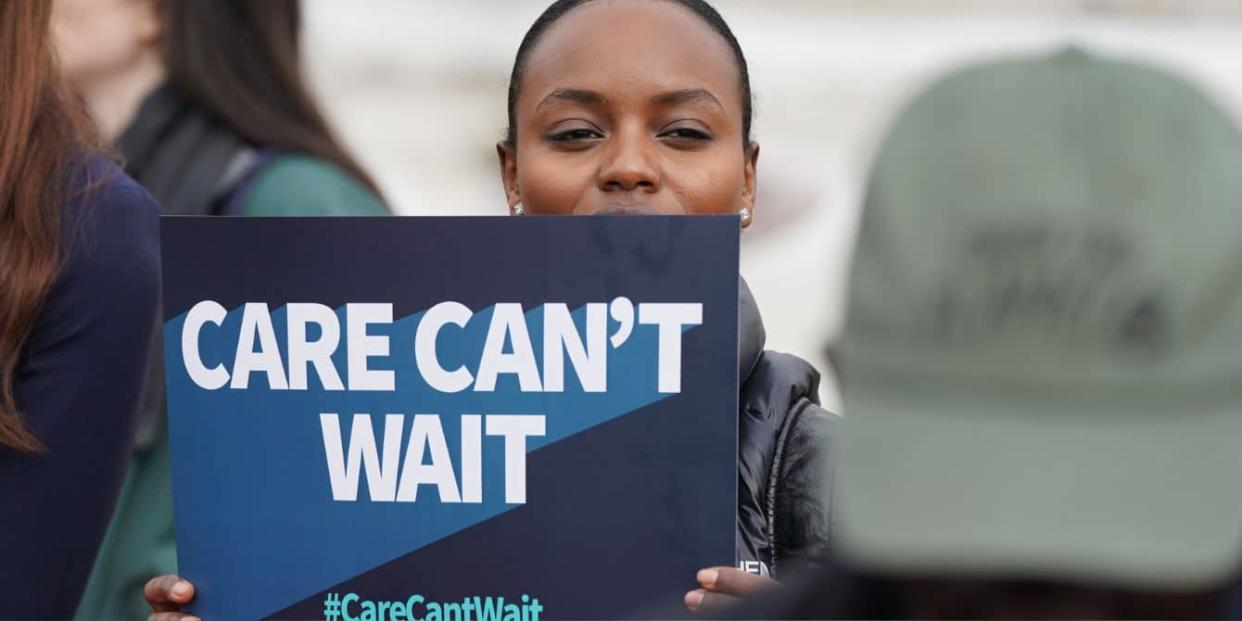What is a ‘child care cliff?’ What parents need to know about the current child care crisis

One of the hardest hits to any working parent’s checkbook (or Venmo, now) is their childcare bill. Costs are rising at a much higher rate than typical inflation increases, NPR reports. But the worst might be yet to come, experts are reporting — at the end of September, funding from the pandemic that has been supporting childcare centers is ending, and around 3 million children might be without a spot.
$50 million allocated to childcare will no longer be available to pay staff, keeping centers afloat, will be over, and multiple legislators have been calling for a plan for a while to keep America’s parents at work. The problem is, there is no plan, and instead a very real possibility that parents are going to have to exit the workforce in droves, without other options for childcare. As parents in many places around the country know, there are also year-long wait lists already in some centers and schools.
Here’s what will happen if Congressional Republicans get their way and let federal child care funding fall off a cliff: pic.twitter.com/jkjtmnYFH7
— Elizabeth Warren (@ewarren) August 11, 2023
Senator Elizabeth Warren is calling on President Biden and other legislators to do something, specifically to allocate funding to this problem to keep working parents working. In her Op-Ed in CNN, she calls the system “badly broken” pointing to the fact that there’s been no sustainable system or federally funded childcare in the U.S. and it’s showing.
“And even when families are lucky enough to score a spot, the costs are crushing,” she writes, referencing the fact that parents are spending more than a quarter of their income on childcare, according to a Care.com survey. Additional reports from the U.S. Department of Labor shows that childcare ranged from $4,810 for school age home based care in smaller counties, to $15,417 for infant care in a center in larger counties, according to adjusted prices in 2022 dollars.
Pediatrician and Mom Dr. Julie Morita told NPR that it’s simply inaccessible, and explained how the pandemic revealed how we just can’t work without childcare. Parents who thought they could do both at the same time, even through virtual work, found themselves at their wit’s end trying to balance their families and their jobs, in scenarios that often didn’t go as smoothly as planned.
Instead, she says kids need “nurturing” and consistent childcare options that allow the parents to focus on work. She calls for an “infusion of resources,” and references an executive order that the administration passed to potentially strengthen federal resources. But, she calls on states themselves to help as well, to ensure childcare availability.
Parents might already be seeing evidence that the cliff is near, or that centers are already starting to “fall” off it. For example, a Michigan child care center has already expressed concern about closing three weeks ago, pointing to the funds drying up as the cause.
In Wisconsin, “pint sized protestors” came out to make speeches and hold signs calling for continuation of their child care subsidy program. The centers there used the money to pay for childcare worker wages, rent, utilities,and personal protective equipment. Daycares across the state are looking at closing or raising tuition, making daycare even less affordable to struggling families.
So, what’s a parent to do? There are some tough decisions to make ahead if your child’s daycare is impacted. You can start preparing now, experts advise, by thinking through some questions including:
Should daycare cost be a part of your family planning decisions, including how many kids to have?
What back up care might be accessible to you, or could you start researching, in case the cliff does impact your center or services?
Would you consider quitting your job, changing jobs, or moving to find childcare access or to take care of your kids?
How much more would you be able to pay, if needed, if tuition increases at your current center?
Do you need to reallocate any expenditures you are making now to create a safety net for more expensive childcare going forward?
Can you get on a waiting list for other childcare centers in case yours closes?
Though it’s not anything parents want to think about, given what we’ve already been through in the last few years, thinking ahead instead of relying on policy makers might be a must as the funding concludes.

